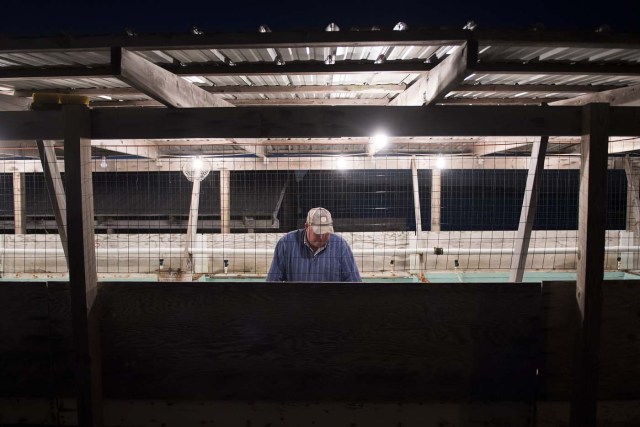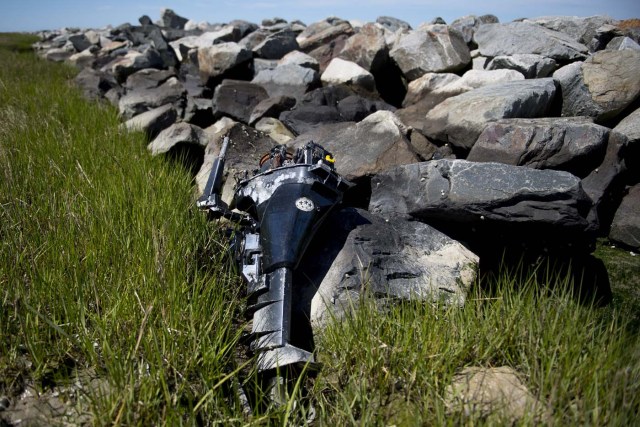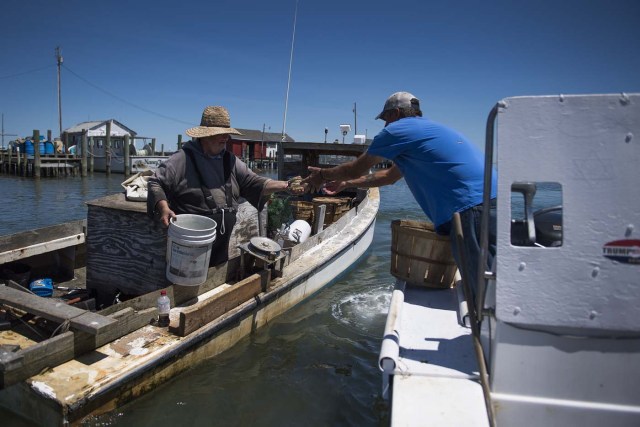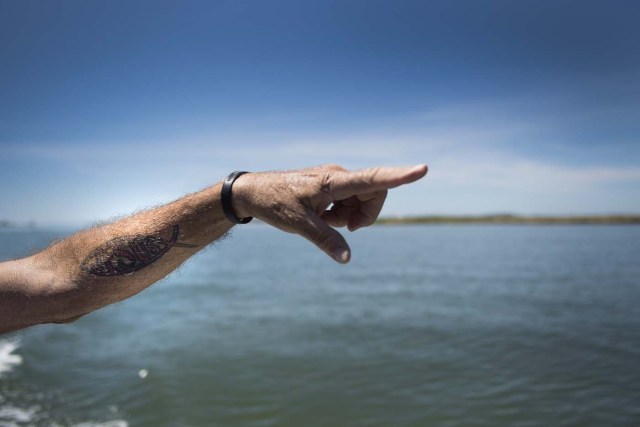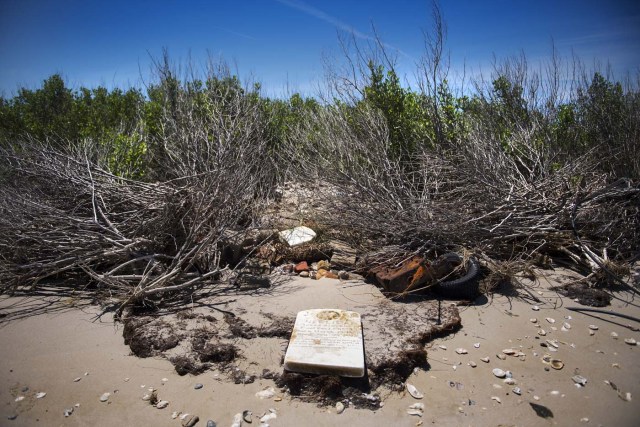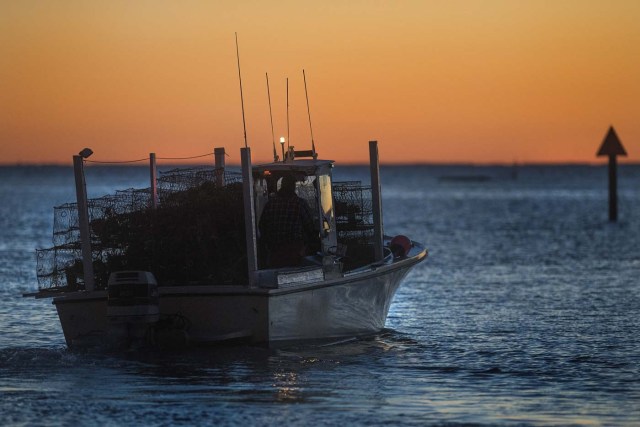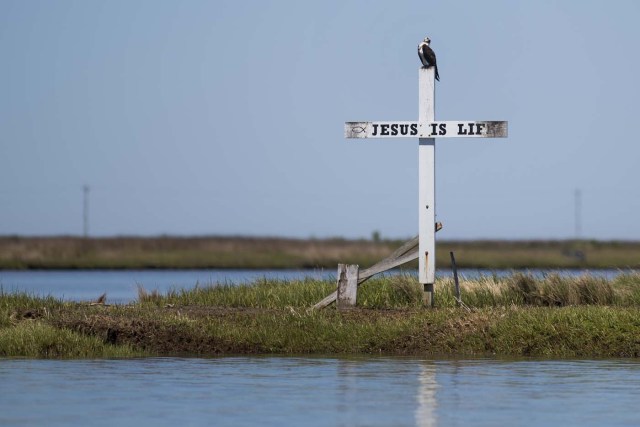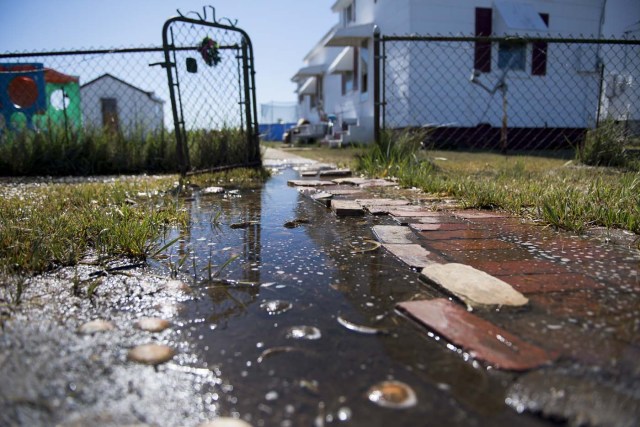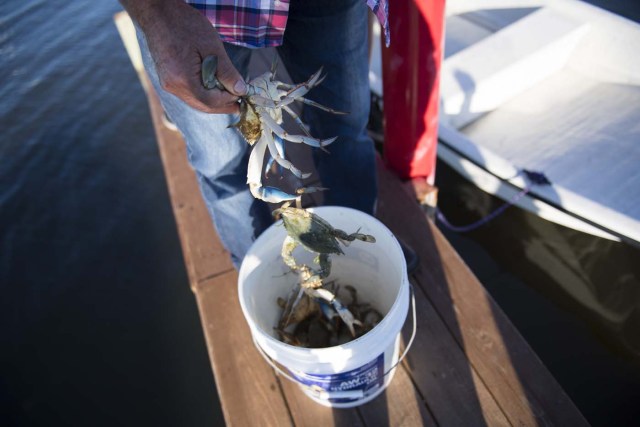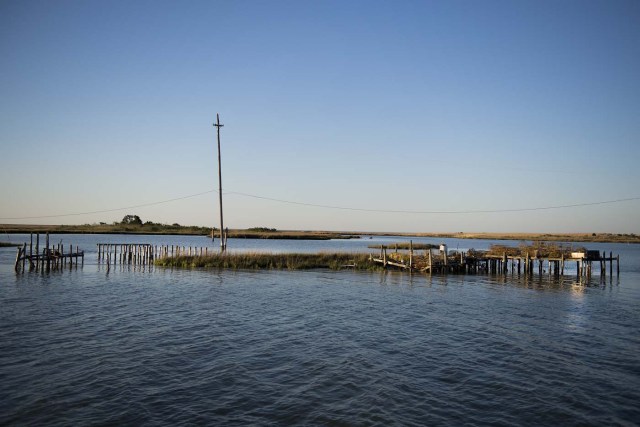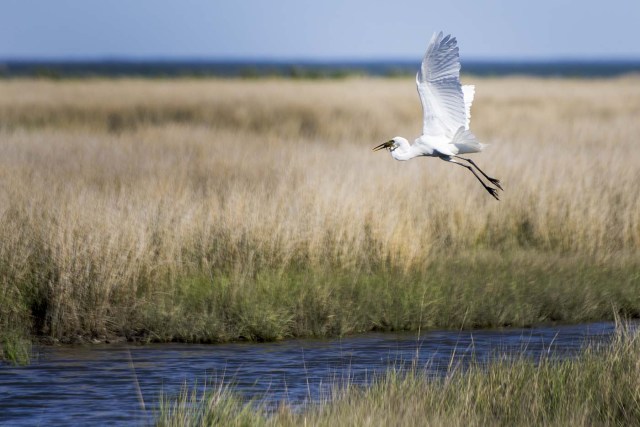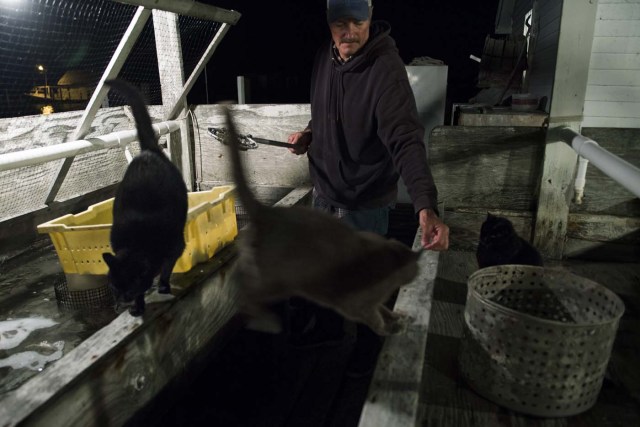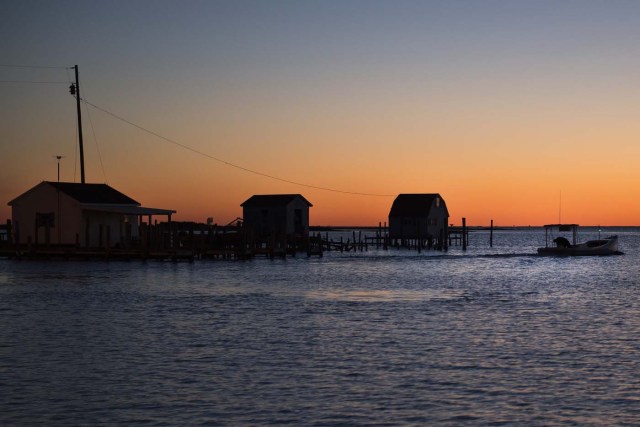
Detrás de la residencia de William Eskridge, un muelle se adentra en la bahía de Chesapeake, lugar de veraneo de los residentes de Washington. El pescador observa el agua que erosiona peligrosamente su jardín: “al menos 30 metros de tierra han desaparecido, solo por la erosión. Y esto parece empeorar cada año”.
La familia Eskridge está instalada en la isla de Tangier desde hace unos 200 años, pero los nietos de William probablemente no podrán venir más dentro de unos años.
Ubicada a 22km de las costas de la bahía que queda a una hora de ruta desde la capital, la isla de Tangier está amenazada por una erosión galopante, acelerada por el calentamiento climático y el aumento del nivel del agua.
Actualmente hay solo un tercio de lo que fue la superficie de la isla en 1850. De aquí a unos 40 años, Tangier habrá desaparecido bajo el agua si no se hace nada.
“Cuando era niña e íbamos a la playa, nos llevaba casi una hora” llegar a ella, recuerda Carol Pruitt Moore, nacida en una de las viejas familias de pescadores de Tangier. Hoy, no le lleva más que unos 10 minutos llegar a la costa desde el poblado. “No salvar a Tangier sería una tragedia”, advierte.
– No es culpa del clima –
Los alrededor de 450 habitantes de la isla están decididos a salvar su legado. Tangier está clasificada en el registro nacional de lugares históricos de Estados Unidos.
El puerto, pulmón económico para estas familias que viven de la pesca de cangrejos, es actualmente amenazado por la erosión. Su entrada por el lado oeste se ensancha, haciéndolo más vulnerable a las tempestades.
El alcalde de la isla, James Eskridge reclama la construcción de un nuevo dique para proteger el lado oeste. “Ese proyecto está en discusión desde, yo diría, cerca de 20 años. Y en 20 años, hubo tanta erosión que el proyecto original ya no funcionaría”.
Esa lentitud administrativa frustra a los habitantes de la isla, que ven a simple vista como aumenta la erosión. El dique debería finalmente ver la luz en 2018, pero ahora no sería más que un simple remiendo para la gravedad de la situación.
Las posiciones de Donald Trump, que viene de anunciar el retiro de Estados Unidos del acuerdo de París sobre el clima y prometió suprimir las regulaciones medioambientales, han encontrado eco en Tangier, donde esos procedimientos de regulación frustran a más de uno.
El presidente estadounidense obtuvo 87% de los votos en la isla, donde el argumento del cambio climático no tiene mucha recepción en la población.
“Esto no tiene nada que ver con el aumento del nivel del mar, está lejos de eso. Estoy seguro que eso tendrá un impacto sobre nosotros algún día. Pero aquí hablamos de erosión a corto plazo que se produce desde hace décadas”, subrayó Bruce, un profesor retirado que vive en la isla.
– Diques y recuperación de tierra –
Dave Schulte, biólogo marino para el cuerpo de ingenieros del ejército, camina en la isla sobre lo que en otro tiempo era el poblado de Canaan. Actualmente no queda allí más que alguna lápida sobre una playa. Abandonada en los años 30, Canaan recuerda que la erosión siempre ha sido un problema en Tangier.
Pero para este biólogo, el calentamiento climático acelera peligrosamente este fenómeno y el aumento del nivel del mar ya ha comenzado.
“El agua está ahora tan alta como para atacar por encima de la línea de arena. En su parte superior, hay una capa de turba pantanosa que forma un suelo muy blando. Eso se puede romper muy fácilmente. Una vez que el mar esté más alto puede alcanzar esta capa y quebrar la isla en pedazos”, advirtió.
Para salvar a Tangier a largo plazo, el científico propone la construcción de diques suplementarios y una recuperación de tierras: “vamos al mar, dragamos las capas arenosas y las bombeamos hacia las partes altas”, dijo.
Los legisladores en el Congreso aún deben dar su aval para un nuevo estudio que determinará qué tipo de medidas adoptar para salvar la isla. Luego deben votar el financiamiento para ese proyecto, que se estima en varias decenas de millones de dólares.
Para John Bull, miembro de la comisión de Recursos marinos del Estado de Virginia, debe tomarse rápidamente una decisión. “Los cambios medioambientales que observamos nos indican que llegado a cierto punto, será demasiado tarde para salvar a Tangier”.
AFP
Fotos AFP
